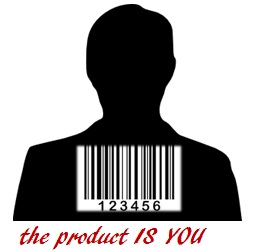Branded for Life: the Mark of a Highly Effective Professional

If you agree that you are ultimately responsible for your own career and professional development, that you design your own path in this life, and that you are the CEO of the Business and Product YOU, then it follows that creating a marketing brand around the Product YOU is essential.
Once my clients are clear on what they want to be, do, and have in their career, they find their opportunities multiply and their advancement catapults.
Once you have that clearer vision, opportunities seem to magically appear. The truth is that it’s not magic at all: those opportunities were always there; you are just now seeing them because you have properly cleaned your career glasses.
They Say that Insanity Is the Act of Doing the Same Things Over and Over Again and Expecting Different Results
If you are happy with the speed and direction of your career, then continue to do exactly what you are doing. But, if you are not happy, then you need to do something different. And that “something different” might be uncomfortable, simply because you haven’t done it before and you are pushing your envelop.

In order to understand what makes you different, you might what to try to clearly articulate a “What I Do” statement.
First step in creating your own “What I Do” statement is to use this simple formula:
“Hi my name is __. I am a (description and title – optional). I help (description of your target/ideal client) get (these types of results) so that they can (get these types of benefits). (Optional: Even if <enter their biggest obstacle or objection.>)
“At the end of the day, I (produce these types of results for people).”
An Example in Action:
Hi, my name is Laura Rose. I am a speaker and author. I am an expert in time and project management.
I help busy professionals and entrepreneurs create effective systems so that they can comfortably delegate to others, be more profitable, and have time to enjoy life — even if they don’t have time to learn new technology or train their staff. I have a knack for taking big ideas and turning them into on-time and profitable projects.
At the end of the day, I transform the way you run your business into a business you love to run.
Where Can You Use YouR “What I Do” Statement?
When we’re not used to marketing or promoting ourselves, we have trouble visualizing where we would even use our “What I Do” statements. But in truth, the opportunities are endless. Once you have practiced your “What I Do” statement such that it has become muscle memory and it is as easy to speak as your name, you will be able to use some form or version of it in these various situations:
- Introducing yourself in any business or social networking event.
- As an introduction to your performance evaluation meeting: as a way to illustrate that your work performance is right on target and often exceeds company expectations. You can also use it as a way to diplomatically decline job tasks that do not match your “What I Do” goals.
- As an introduction to your business proposals and technical presentations.
- As part of your interview and/or meetings with other high-profile clients and executives. The clear “What I Do” statement allows you to attract projects and situations that match. your goals. If others understand your professional goals, it is easier for them to forward matching projects to you.
- At any social event where people ask you “What do you do?”
- Whenever you find yourself with only a few moments with a high-profile client, executive, or business icon. The “What I Do” statement is a quick and easy way to open opportunities with these high-profile individuals.
- When you keep your focus on high-level, big-picture goals, it keeps your execution opportunities very open, but your results very focused.
- As part of your bio in your articles, white papers, and technical conference presentations.
- Whenever you are trying to persuade others that you are an authority in this area and get their votes of confidence (or asking them to join your team).
- As a way to increase your confidence and reputation. You will be calm because you not only fully understand what value you bring, but you can also comfortably articulate that value clearly, concisely, and easily.
This list is not complete, and as you become more comfortable describing yourself in high-level, big-picture perspectives, you will begin attracting other supporters and teammates of similar calibers.
To help you with your branding goals, I have a special webinar coming up on May 16: “Branded for Life: the Mark of a Highly Effective Professional. “ The live webinar also includes a complimentary one-on-one coaching session. There is also a monthly presentation, “Never Say No: 3 Keys to Saying Yes On Your Own Terms.”
For more information on either of these workshops, please contact me at LauraRose@RoseCoaching.info


